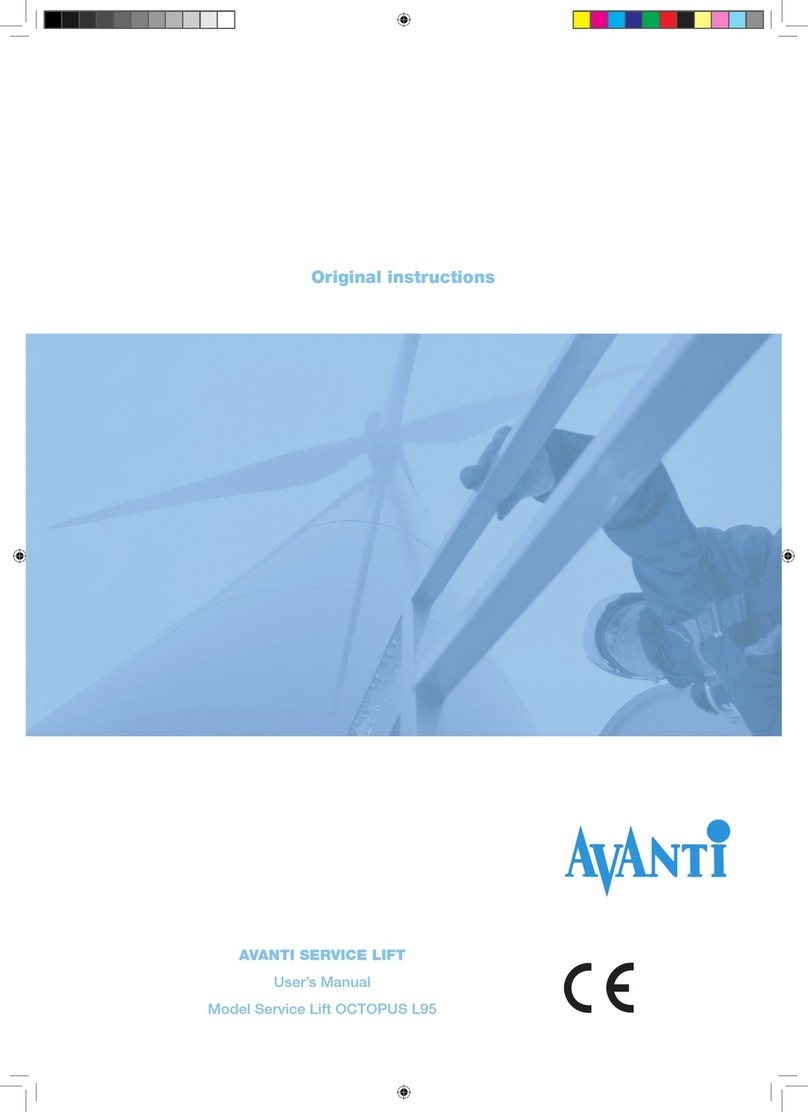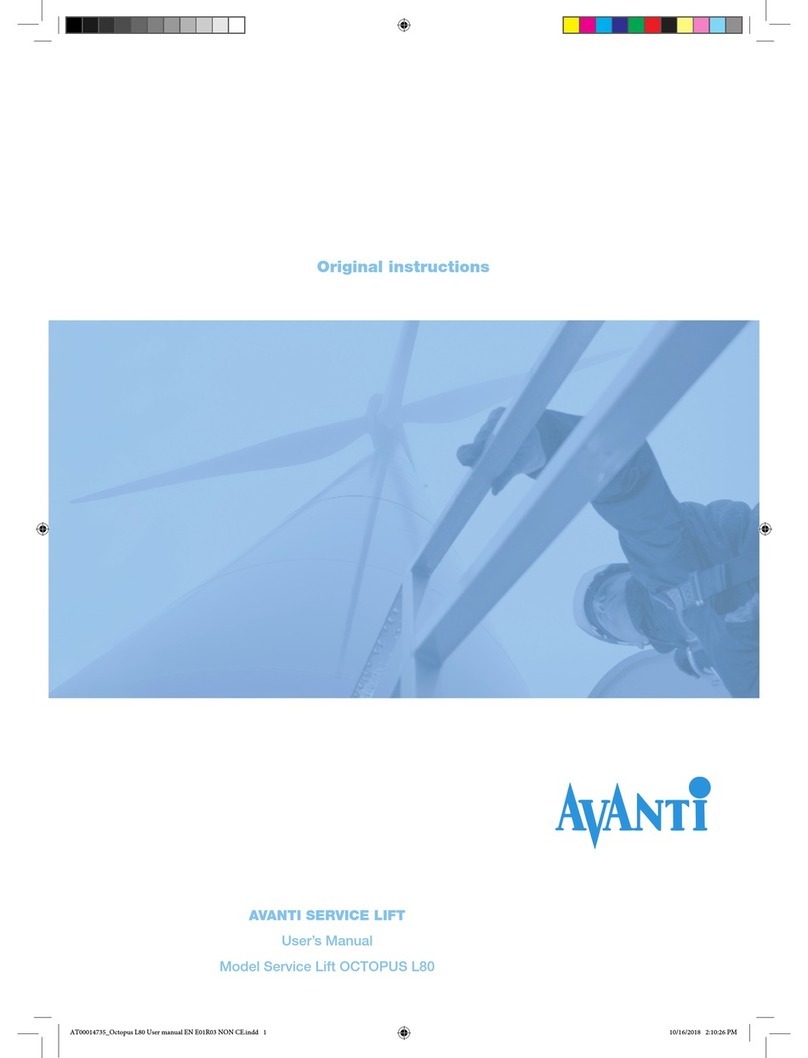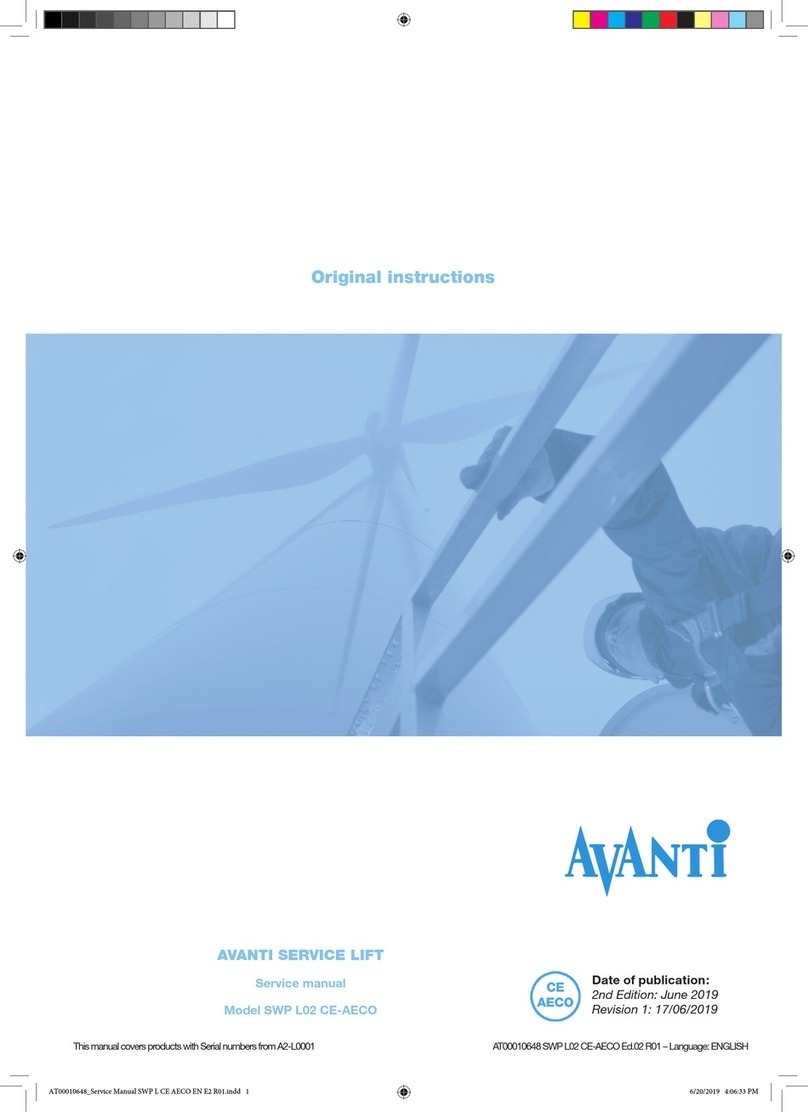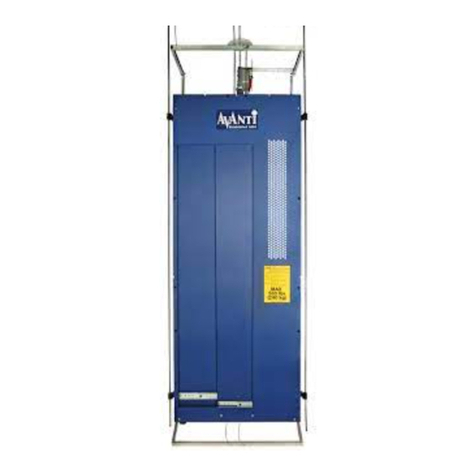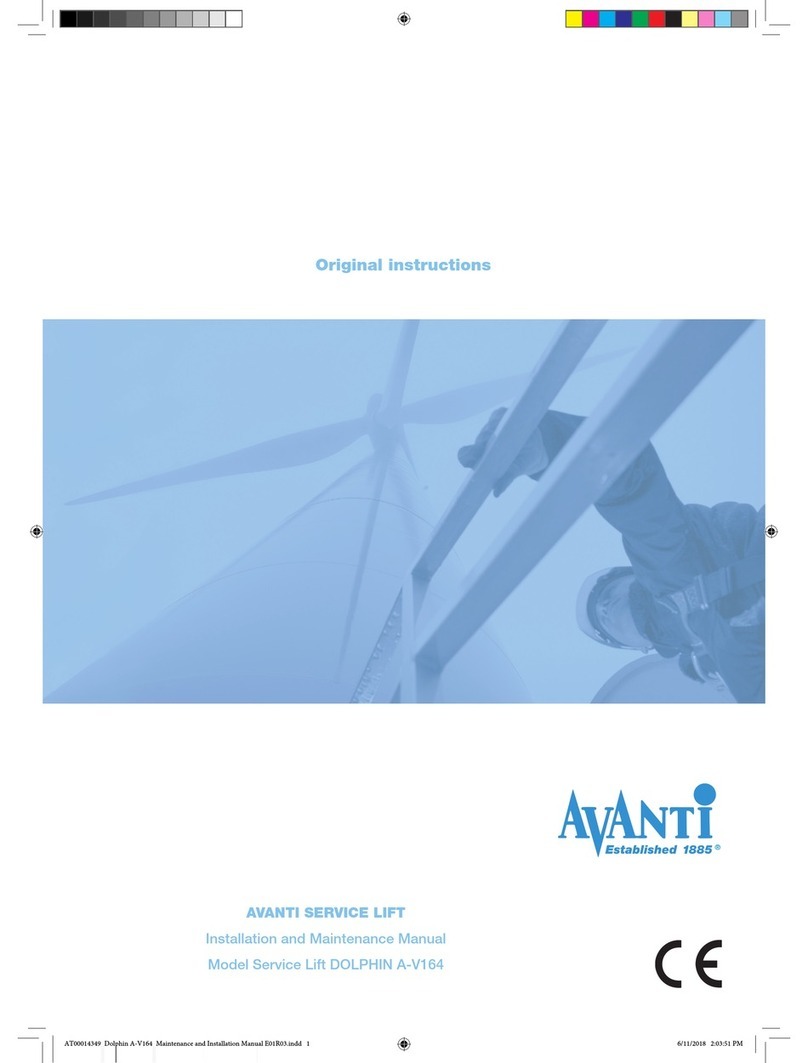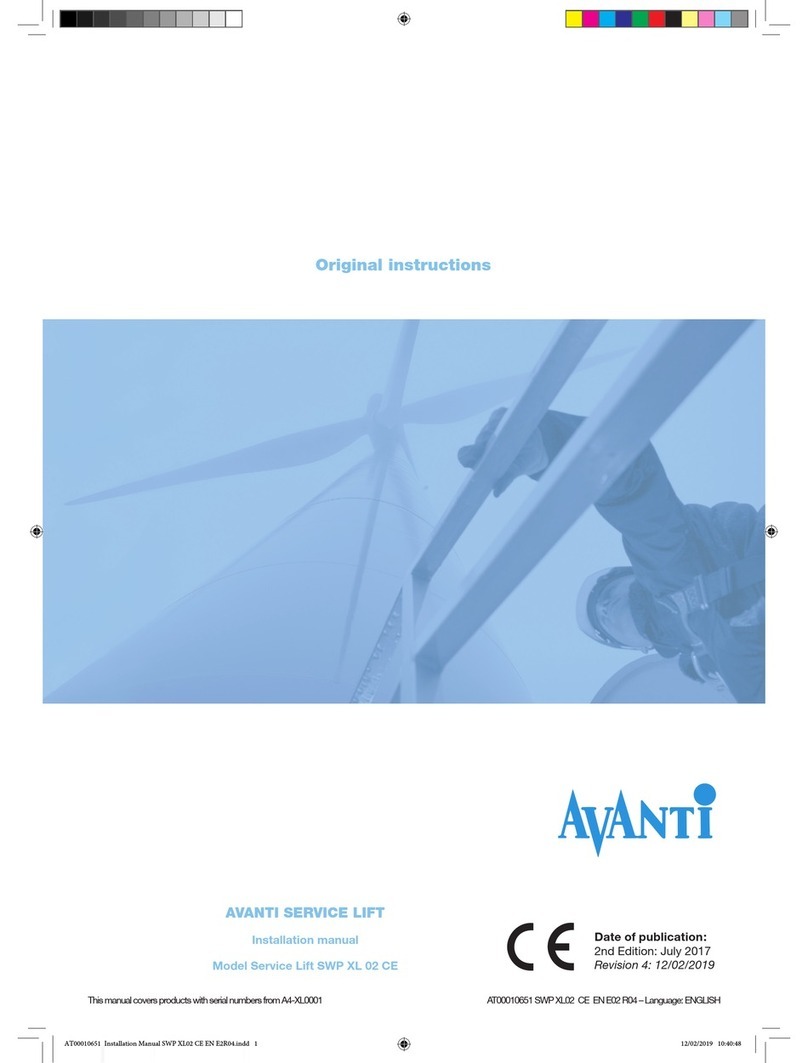
1.4 Cautions
Personnel must be of legal age. Personnel must be
familiar with the relevant accident prevention instructions
and must have received appropriate occupational heath
and safety training.
The service lift must not be used by persons who are
under the influence of alcohol or drugs and who may
jeopardize working safety.
Prior to installation, ensure that:
•Building sections involved will be able to withstand the
service lift loads.
•All parts are available and fully functional.
•Travel path is protected by fences at each platform.
•Walking way surfaces are dry and not slippery.
During installation tasks:
•Personnel must wear PPE (safety helmet, full
body harness, shock absorber, lanyard and slider) at all
times andcarry2waycommunicationsystemsdependingon
local regulation.
•Use a hand winch attachable to the ladder when
elevating heavy weights.
•Use a wire rope clamp or grip when lowering wire ropes,
in order to avoid the risk of personnel losing the wire rope,
and wire rope getting damaged or person being hit. The
clamp shall be secured to a platform anchor point. The
diameter of the clamps or grips shall match the diameter
of the wire ropes.
•Not work at different levels if tasks involve risk of falling
objects.
The service lift is designed for a useful life of 20 years with
an approximate use frequency of 12.5 h/year (250 h in
total).
Installation and maintenance of the service lift must only be
performed by certified technicians. The service lift must be
inspected by a certified technician before its first use.
The service lift must be inspected at least once a year by a
certified technician. In case of high use frequency
or severe use conditions, more frequent
inspections are required.
If more than one person is entrusted with
installation, inspection or maintenance tasks, the
employer must appoint a supervisor in charge of
the operation.
Use and daily inspection of the service lift must only be
performed by persons who have received the relevant
training associated with the use and daily inspection of the
Avanti service lift and who are in possession of a valid (not
expired) certificate for the task.
Before any maintenance task, ensure that walking way
surfaces are dry and not slippery.
Before any maintenance operation, check that the service
lift is properly out of service.
CAUTION
Avoid injury — follow all instructions.
If any damage or faults are found during
operation, or if circumstances arise which may
jeopardize safety: interrupt the work in progress
immediately and notify the supervisor or employer.
If required secure workplace.
The service lift must not be used in the event of
a fire in the tower.
The service lift must only be used when the
turbine is not generating power.
All wind farm regulations must be followed. The
service lift must not be used during severe
weather, including wind speeds over 18 m/s.
The customer must define the maximum allowable
wind speed ensuring safe installation.
If any supporting parts are repaired or replaced,
the operational safety of the system must be
tested and verified by a certified technician.
All test / repairs of electrical installations must only
be performed by a certified technician.
All repairs to the traction, braking and supporting
systems may only be performed by a certified
technician.
Only original fault-free parts must be used. Use of
non-original parts renders the manufacturer’s warranty
void and invalidates any type of approval.
No modification, extension or reconstruction of the
service lift is allowed without the manufacturer’s prior
written consent. No warranty is provided against
damage resulting from reconstruction or
modification of equipment or use of non-original
parts that are not approved by the manufacturer.
In case self-locking nuts are used, these nuts must not
be used once it has become possible to loosen by hand
and in no case should they be reused, but must be
replaced.
During maintenance tasks, personnel shall:
•Wear at least the following PPE: fall arrest equipment
(when falling height is more than 2 m), hand gloves,
helmet, safety glasses and working gear.
•Place cabin at bottom platform and disconnect power
supply.
•Use an electricity measuring tool when performing
inspection of electrical components.
•Use a hand winch attachable to the ladder when
handling big/ heavy loads and shall be performed at least
by 2 persons.
•Panel parts shall be removed to facilitate access to
confined spaces.
•Use a cable grip when replacing travelling cable.
•Keep cabin doors closed when using a 3-step ladder.
NOTICE
The owner must verify the need for third-party service
lift inspections with the local authority and comply with
specified standards.
4
